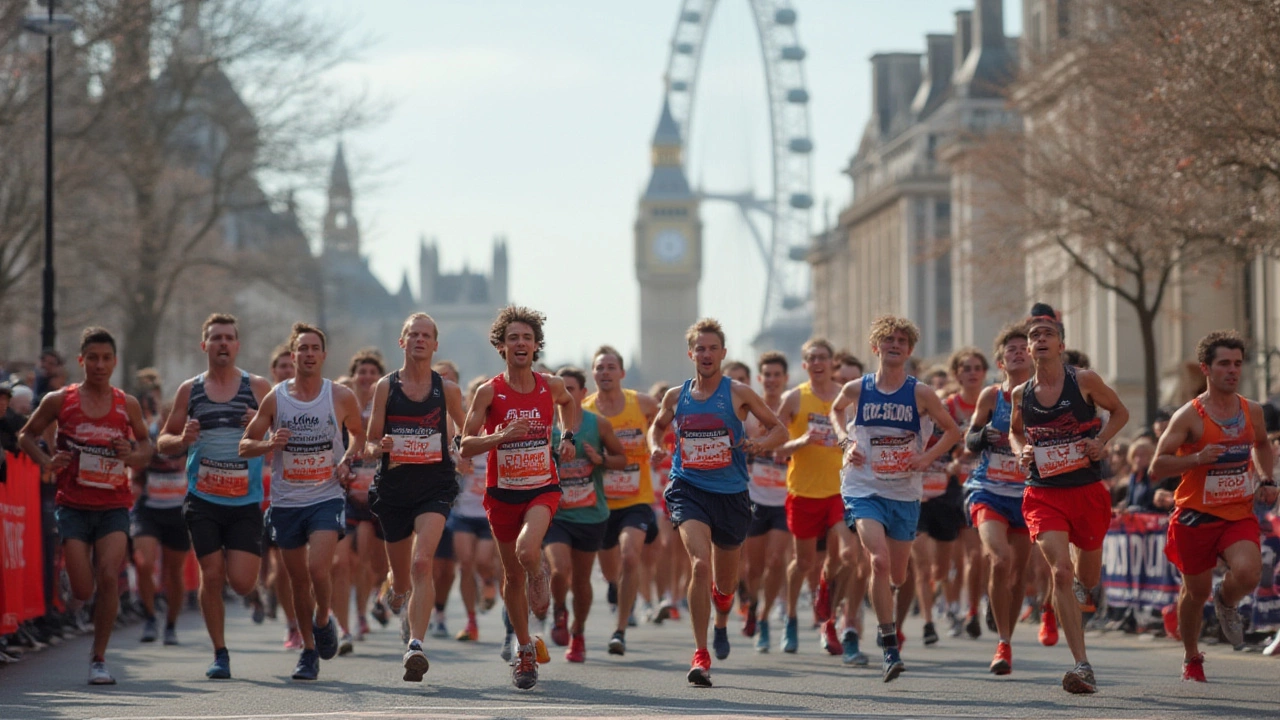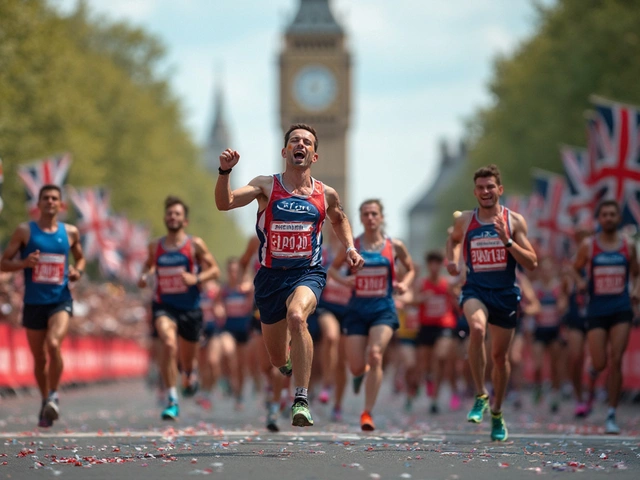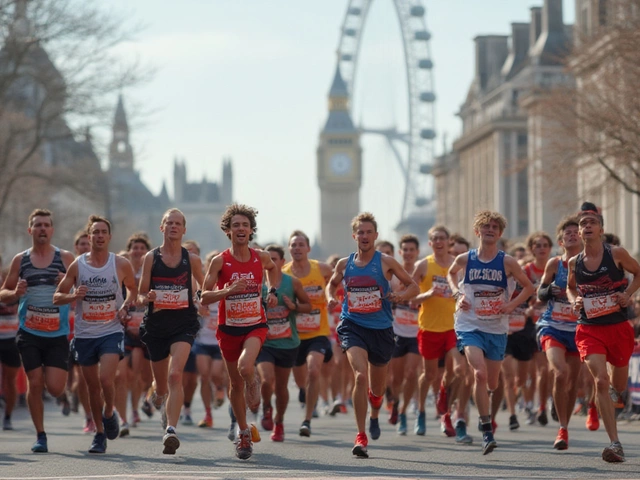Marathon finish lines can trigger wild emotions: joy, relief, pride, even frustration. For heaps of runners, that ticking clock means more than just numbers—it’s the story of months of training, late nights, weird breakfasts, and every drop of sweat along the way. So, let’s talk straight: Is 4.5 hours good for a marathon? The answer depends on your starting point, your goals, and a pile of factors a stopwatch can’t sum up.
The Basics: What the 4.5 Hour Marathon Really Means
Alright, the facts: a marathon is 42.195 kilometers (or about 26.2 miles). If you finish in 4 hours and 30 minutes, you’re running an average pace of about 6:24 per kilometer (10:18 per mile). For most people outside the running bubble, that still sounds blazingly fast—try jogging that pace for just an hour, let alone 4.5. Yet in the huge world of marathoning, the clock never lies and every finish time fits somewhere on a wild, sliding scale.
The average finishing time for men is currently around 4:15 and for women it’s about 4:45, according to big race data from places like the New York and London Marathons. That means marathon time of 4:30 lands you right in the thick of the field. It’s not elite—but it’s ahead of thousands of others and shows real dedication. You’re not just surviving the distance, you’re keeping a strong, steady pace all the way through.
But, context is everything. The speedsters upfront—the ones chasing podiums—are hammering sub-3 hour times. But that’s not most of us. Most marathoners are aiming to break five hours, or just to cross the finish before the course sweeps them up. This is where 4.5 hours holds up as a very respectable mark, especially for casual, recreational, or first-time runners.
The reality is, a marathon is never easy, no matter your speed. That’s why a 4.5-hour finish line feels darn sweet for most non-professional runners. The worldwide median hovers around this number, so you’re not just finishing—you’re beating a solid half of the pack. It’s proof you trained smart, managed your race well, and stuck with it down that agonizing last stretch when every muscle screamed.
Who Usually Runs a 4.5 Hour Marathon?
So who’s breaking that tape at the 4.5 hour mark? Most often, it’s recreational runners—people with day jobs, busy home lives, and a firm spot somewhere between weekend warrior and full-time athlete. They’re parents squeezing in runs before school drop-offs, twenty-somethings juggling work and social lives, and folks who just love pounding the pavement, even if it hurts.
Often, these runners train about 30–50 kilometers per week, sometimes using basic plans off the internet or following local club schedules. They’re not usually tracking every calorie or living by strict sleep routines, but they show up and put in the work week after week. Injuries, illness, or life interruptions sometimes slow progress, but perseverance pays off when those four and a half hours start ticking down on race day.
Demographically, 4.5 hours is standard for charity runners, busy parents, or folks running their first or second marathon. But really, there’s no clear mold. Some might be older runners with years of experience, using decades of wisdom to pace themselves smartly. Others could be younger, fitter folks who just didn’t hit their stride for one reason or another. It’s a diverse crowd—students, teachers, tradies, retirees.
Race-day conditions also matter. Hot weather, tough hills, or crowded start lines can add minutes (or more). In big city races, bottlenecks at drink stations or bathroom queues can trip up even your best plans. Still, 4.5 hours generally reflects a level of consistent training and determination that’s nothing to sneeze at. You’re likely running, not walking, most of the course—and keeping your cool across the full 42Ks.
Even at the pro level, some accomplished runners step off the gas for charity or fun runs and join the back of the pack. You never know who you’ll meet jogging beside you, sharing stories, or spurring each other through cramps and blisters. That’s the beauty of the marathon, no matter your pace.

What’s Behind the Clock: Training, Age, and Body Factors
This next bit is where it gets interesting: why do some people hit 4.5 hours and others struggle? Genetics plays a role, sure—VO2 max, fast-twitch muscles, and all that. But unless you’re chasing world records, your training, injury history, and life balance matter more.
Most training plans for a 4.5 hour marathon involve three to five runs a week, a proper long run every weekend, some interval or tempo work, and rest days. The long run is key, stretching up to 30–35 kilometers at peak. These help the body adapt for distance and give the mind a dress rehearsal for tough miles.
Age changes the equation a bit. Looking at real results from Sydney and Melbourne, most marathoners over 40 finish anywhere from 4:15 to 5:00 depending on background and injury history. Younger runners sometimes go quicker, but not always—newcomers can find out the hard way that endurance counts more than youthful speed.
Body size and shape matter too. Runners carrying extra weight (muscle, fat, or a mix) have to work harder over the same distance. But with training, that gap narrows fast. Most 4.5-hour runners have tuned their eating habits, fueling up with slow-release carbs, protein, fruits, and the occasional energy gel or sports drink.
A lot comes down to mindset. The “wall”—that dreaded point around 30K where the body just wants to stop—hits everyone. Those who finish around the 4.5 hour mark have learned to deal with it, using tricks like breaking the race into chunks, visualizing the finish, talking with friends, or repeating mantras. Mental strength is half the battle.
Let’s not forget injuries. Plenty of runners aiming for faster times end up limping to the line at 4:30, nursing sore knees or a stubborn blister. Others, pacing themselves from the start, hit 4.5 easy and still feel good enough to celebrate afterwards. That finish time often reflects equal parts luck, grit, and how well you kept yourself together over weeks and months of training.
Nutrition and hydration—especially for marathons with an Aussie summer coming on—are real deal-breakers. The right game plan means practicing with sports drinks or gels in training, keeping sodium steady, and learning how your digestive system handles food on the run. Cramps, bloating, or the wrong breakfast can slow anyone down, even the best prepared.
Bigger picture: a 4.5 hour marathon tells the world you committed, planned, and saw it through. You can’t fake four-plus hours of running. That’s always something to respect.
How to Run a 4.5 Hour Marathon (or Beat It)
Dreaming of hitting that 4:30 mark or cutting your time even further? Here’s how real runners in places like Adelaide, Melbourne, and beyond make it happen—without turning life upside down.
- Stick to a smart schedule: Most 4.5-hour marathoners run about 30–50K per week, with a staple long run on the weekend. The sweet spot is regular, manageable runs—consistency wins over wild, late-night spurts of effort.
- Make long runs count: Don’t just build distance—practice race-day nutrition and hydration, and figure out the right pace. You should finish long runs a bit tired, but not destroyed.
- Embrace easy days: Recovery runs and complete rest matter more than newbies think. It’s not weakness—it’s smart training that lets your body adapt and stay injury-free.
- Strengthen your everything: Squats, core work, and even a bit of upper-body training help fight fatigue. Plus, it keeps your form tidy on race day and fends off injuries from sloppy muscles.
- Fuel right before and during: Learn what sits well—porridge, toast, banana, rice? Gels, chews, or plain water? Practice until you find what works. It’s personal. Nothing new on race day.
- Pace with discipline: Going out too fast is the oldest trick in the marathon book. A 4.5 finish means sticking to that 6:24/kilometer (10:18/mile) rhythm, even when it feels almost too slow early on. Your future self will be grateful at kilometer 35.
- Train your mind: Visualize, meditate, use positive self-talk—find ways to shut down the negative voice when it pipes up. Trick your brain by counting laps, songs, or sections instead of staring at the clock.
- Listen to your body: Prevent injuries by acting early. Sore knee? Rest a day. Ankles hot? Ice and stretch. There’s no prize for running through pain that needs real rest.
- Enjoy your milestones: Celebrate your first 20K, your best training week, or the first time you nail your fueling. Motivation grows with every mini-win.
- Don’t compare finish lines: Someone else’s 3:30 might be your 4:30, and so what? Every runner starts somewhere.
If you want the numbers: most qualified training plans last between 16 to 20 weeks, often peaking at 30 to 35 kilometers on the longest run. Break up your weeks with easy runs, tempo efforts, and slow long slogs. Taper properly in the last 2–3 weeks—don’t be tempted by last-minute “cramming.”
Marathon day in Australia often surprises with wild weather: hot wind, sideways rain, or even blue skies and perfect cool conditions. Control what you can, roll with the rest. Position yourself near runners aiming for similar paces; running beside someone matching your rhythm can turn mental agony into camaraderie. Talk to people in the final kilometers. Even a quick “we’ve got this” can stop negative thinking sneaking in when you’re hurting the most.
The drive to break 4.5 hours isn’t hopelessly ambitious, either. First marathoners sometimes clock 5+ hours just to survive. A tweak in the next round—smarter taper, cleaner fueling, better pacing—and boom, that time drops. The running world is loaded with stories of folks who shunned fancy watches, trusted their legs, and nailed a 4.5 hour debut.
At the finish, the numbers may matter, but what really sticks is resilience. That’s what sets the runners apart from the rest. A 4.5-hour marathon isn’t just 'good'—it’s hard-earned and, for so many, represents the balance between pushing limits and loving the challenge. Don’t let anyone tell you otherwise.








